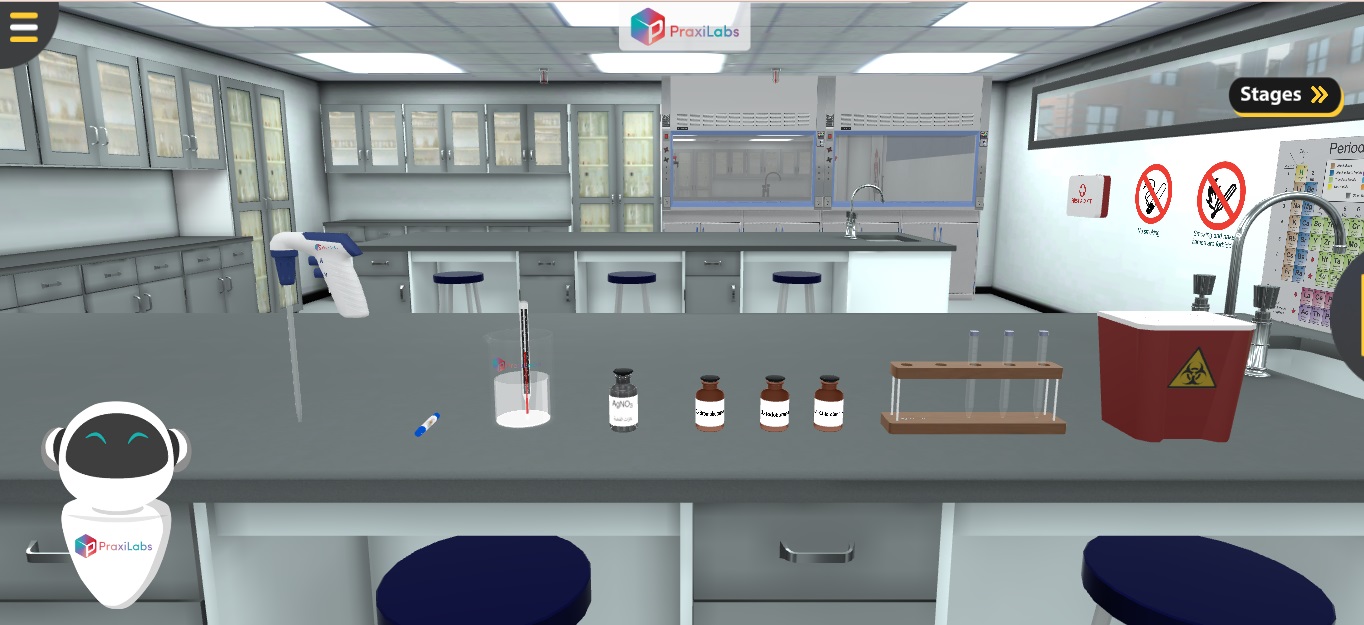Reaction of Alkyl Halides (Hydrolysis of Alcohols) Virtual Lab
Chemistry | Organic Chemistry






2.5M+
Active Users Worldwide
80%
Improved Learning Retention
60%
Reduction in Laboratory Costs
Reaction of alkyl halides
Alkyl halides can undergo both SN1 and SN2 nucleophilic substitution reactions. The reactivity of alkyl halides depends on the halide atom, alkyl substitution, and reaction solvent.
Become proficient at running organic chemical reactions.
Alkyl halides fall into different classes depending on how the halogen atom is positioned on the chain of carbon atoms. Alkyl halides are classified as 1°, 2°, and 3° on the basis of the carbon atom to which it is attached. There are some chemical differences between the various types.
Figure 1. The chemical structure of alkyl halides where X is the halide.
Alkyl halides undergo a nucleophilic substitution reaction as they are weak bases and can readily release their electrons. Bases contain an unshared pair of electrons and thus are called nucleophiles and can attack the nucleus (nucleus loving) and when these nucleophiles cause substitution generally on C-atom then this reaction is called nucleophilic substitution reactions.
In general, halogens are more electronegative than carbons. This results in a carbon-halogen bond that is polarized. So carbon atom has a partial positive charge, while the halogen has a partial negative charge. According to electronegativity, I< Br< CL< F. The following Figure displays the relationships between bond length, bond strength, and molecular size. As we progress down the periodic table from fluorine to iodine, molecular size increases. As a result, we also see an increase in bond length, and the strength of those bonds decreases.
Figure 2. Different carbon halide bond length, strength and molecular size
Hydrolysis: When alkyl halides are treated with aq. KOH in boiling water, alkyl halides are hydrolyzed to give alcohols. Here, the halo group is substituted by hydroxide ion. Alkyl halides converted to alcohol using aqueous KOH solution by simple nucleophile substitution. Primary alkyl halides undergo SN2 while secondary and tertiary alkyl halides undergo SN1.
Alkyl halides undergo a nucleophilic substitution reaction as they are weak bases and can readily release their electrons. Bases contain an unshared pair of electrons and thus are called nucleophiles and can attack nucleus (nucleus loving) and when these nucleophiles cause substitution generally on C-atom then this reaction is called nucleophilic substitution reactions.
Figure 3. Nucleophilic substitution reaction of alkyl halides.
The nucleophilic substitution can take place by the following mechanisms:
(A) SN1 mechanism: It is a first-order reaction since the rate of reaction depends upon the concentration of a single reactant. The order of reactivity of alkyl halides is 3°> 2°> 1°.
For example, the reaction of tert-butyl bromide and hydroxide ion to give tert-butyl alcohol.
Figure 4. Alkaline hydrolysis of tert-butyl bromide to tert-butyl alcohol.
Mechanism: this reaction takes place in two steps Step 1: The tert-butyl bromide dissociates to give tert-butyl carbocation and a bromide ion (leaving group). This is the slowest step hence rate determining. Step 2: In this step, the hydroxide ion adds quickly to the carbocation formed above to form tert-butyl alcohol.
Figure 5. Mechanism of alkaline hydrolysis of tert-butyl bromide to tert-butyl alcohol
(B) SN2 Mechanism: In SN2 mechanism the nucleophile attacks from the back side . It is a second order reaction since the rate of reaction depends upon concentration of both the reactants.
For example: The reaction between Methyl bromide and hydroxide ion to form methanol.
Mechanism: This reaction occurs in a single step that is the Methyl bromide and hydroxide ion collides such that the making of C-OH bond and the breaking of C-Br bond occurs simultaneously thus liberating bromide ion shown as follows:
Figure 6. Mechanism of alkaline hydrolysis of methyl bromide to methanol




